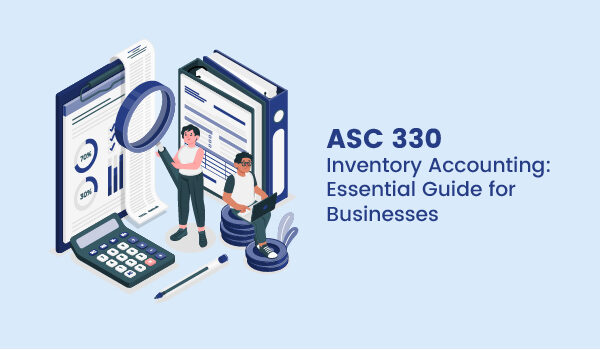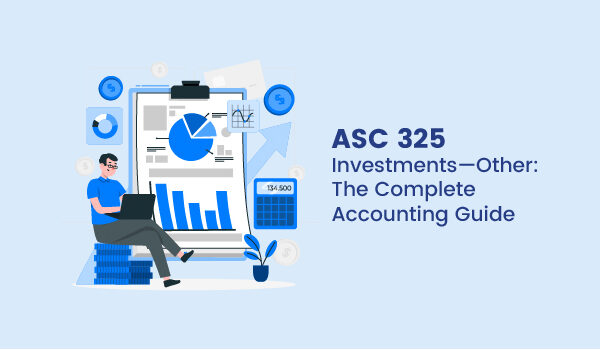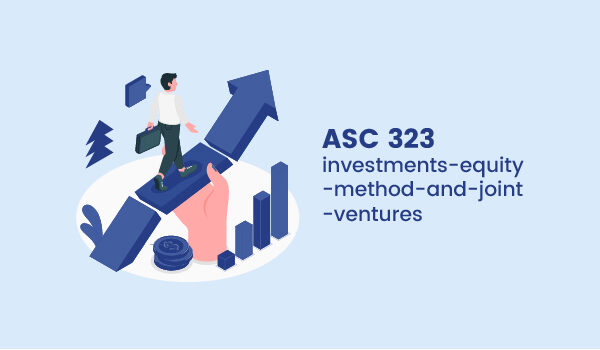ASC 325 – Investments—Other: The Complete Accounting Guide

In the complex world of accounting, not all investments fit neatly into standard categories like debt or equity securities. This is where ASC 325 – Investments—Other comes in, providing crucial guidance for investments that don't fall under ASC 320 (Debt & Equity Securities) or ASC 321 (Equity Method Investments).
Whether you're an accountant, investor, or business owner, understanding how to classify, measure, and disclose these investments is essential for financial reporting accuracy and compliance with U.S. GAAP. From securitized financial assets to life settlement contracts, ASC 325 ensures that organizations handle these investments correctly.
What is ASC 325?
ASC 325 – Investments—Other is part of the Financial Accounting Standards Codification (FASB ASC) and applies to investments that do not fit into other specific categories, such as debt and equity securities (ASC 320) or equity method investments (ASC 321).
This standard primarily addresses:
Cost-method investments: Previously used for equity investments where the investor lacks significant influence.
Beneficial interests in securitized financial assets: Investments in structured financial products.
Life settlement contracts: Investments in life insurance policies purchased for investment purposes.
ASC 325 provides rules on recognition, measurement, impairment assessment, and disclosure of these investments to ensure transparency in financial reporting.
Key Areas of ASC 325
1. Cost-Method Investments
Under ASC 325, cost-method investments are those where an investor owns a non-controlling interest in another entity and does not have significant influence over its operations.
Accounting Treatment:
- These investments were previously recorded at cost, unless fair value was readily determinable.
- The cost-method concept has been largely replaced by ASC 321, which now requires fair value measurement for equity securities without significant influence.
Example:
A company holds a 5% stake in a private business with no market for its shares. Under ASC 325 (before ASC 321), this investment would be recorded at cost. However, today, fair value measurement is preferred when possible.
2. Beneficial Interests in Securitized Financial Assets (ASC 325-40)
Beneficial interests refer to ownership stakes in securitized assets, such as mortgage-backed securities (MBS), asset-backed securities (ABS), and collateralized loan obligations (CLOs).
Classification & Accounting:
Under ASC 325-40, beneficial interests are classified as:
✔ Held-to-Maturity (HTM) – Measured at amortized cost.
✔ Available-for-Sale (AFS) – Measured at fair value with changes recognized in Other Comprehensive Income (OCI).
✔ Trading – Measured at fair value with changes reported in net income.
Impairment Testing:
- Investments must be tested for impairment when credit losses are expected.
- If impairment is identified, the loss is recognized in earnings.
Example: A company invests in mortgage-backed securities (MBS) classified as AFS. If housing market conditions deteriorate and reduce the cash flows from these securities, impairment might be recognized.
3. Life Settlement Contracts
A life settlement contract is an investment in a life insurance policy, where the investor purchases the policy from the original owner and continues paying the premiums. Upon the insured’s death, the investor collects the death benefit.
Accounting Methods Under ASC 325:
Investment Method: The policy is recorded at its carrying amount (cash surrender value plus premiums paid). No fair value adjustments are made.
Fair Value Method: The policy is recorded at its fair value, with changes recognized in earnings.
Disclosure Requirements: Policy details, valuation method, and estimated cash flows must be disclosed.
Example: A hedge fund purchases a life insurance policy for $1 million, pays annual premiums of $50,000, and expects to receive $5 million upon maturity. Under ASC 325, they must choose an accounting method and disclose the investment in their financial statements.
ASC 325 Impairment Testing
Since investments under ASC 325 do not always follow a fair value model, impairment testing is crucial to ensure accurate financial reporting.
Impairment Considerations for Different Investment Types:
| Investment Type | Impairment Trigger | Accounting Treatment |
| Cost-Method Investments | Decline in value that is other than temporary | Written down to fair value |
| Beneficial Interests | Expected credit losses on underlying assets | Recognized in earnings |
| Life Settlement Contracts | Change in expected cash flows or insured's health | Adjusted per chosen method |
Example: A company holding beneficial interests in a securitized loan portfolio must periodically evaluate whether a decline in expected cash flows is permanent or temporary and adjust its investment accordingly.
ASC 325 Disclosure Requirements
Accurate financial reporting requires entities to disclose key information about their ASC 325 investments. Failing to disclose material investment details can lead to compliance risks and audit concerns.
What Needs to Be Disclosed?
Nature & Classification of Investment: Whether the investment is a cost-method investment, beneficial interest, or life settlement contract.
Valuation Method Used: Whether the company follows the cost model, fair value model, or amortized cost model.
Impairment Considerations: Details of any impairment recognized, including the reasons, impact, and accounting adjustments.
Future Cash Flow Expectations: Required for life settlement contracts and securitized assets.
Significant Risks: Any risks affecting investment returns, such as market volatility, credit risks, or expected losses.
Example Disclosure:
A company investing in mortgage-backed securities (MBS) under ASC 325-40 might include the following note in its financial statements:
“As of December 31, 2024, the company holds mortgage-backed securities classified as Available-for-Sale (AFS) under ASC 325-40. The fair value of these securities is $5 million, with an unrealized loss of $200,000 recorded in Other Comprehensive Income (OCI). Given changes in the housing market, an impairment assessment is ongoing.”
Comparison: ASC 325 vs. ASC 321 vs. ASC 320
Understanding the differences between ASC 325, ASC 321, and ASC 320 is essential for proper classification and reporting.
Key Differences Between Investment Standards
| Feature | ASC 325 | ASC 321 | ASC 320 |
| Scope | Investments that don’t fit other categories | Equity investments without significant influence | Debt & equity securities |
| Fair Value Option | Sometimes allowed | Required for public companies | Allowed for AFS & Trading securities |
| Impairment Model | Based on asset type | Market-driven losses | CECL for debt securities |
| Key Investments | Life settlements, securitized assets | Non-public equity investments | Bonds, stocks, mutual funds |
Example:
- A private company’s non-controlling stake in another private business (no significant influence) would fall under ASC 321.
- A life settlement contract investment would be accounted for under ASC 325.
- A corporate bond investment would be classified under ASC 320.
Recent Updates & Amendments to ASC 325
The FASB periodically updates ASC 325 to clarify guidance and align accounting practices with evolving financial markets.
Key Recent Developments:
- Integration with CECL Model: Certain securitized assets under ASC 325-40 now align with the Current Expected Credit Losses (CECL) model in ASC 326.
- Enhanced Disclosure Requirements: Investors must provide more details on valuation methods and risk factors for securitized financial assets.
- Clarifications on Fair Value Measurement: Updates to fair value election criteria for life settlement contracts.
Example:
A recent amendment clarified that investors holding beneficial interests in securitized financial assets must disclose expected cash flow projections to enhance financial statement transparency.
Want the latest FASB updates? Check the FASB website.
Conclusion
ASC 325 plays a critical role in accounting for investments that don’t fit under standard equity or debt securities. Understanding its scope, impairment rules, and disclosure requirements ensures compliance with U.S. GAAP and accurate financial reporting.
Key Takeaways:
✔ ASC 325 covers securitized assets, life settlement contracts, and certain cost-method investments.
✔ Impairment testing varies based on investment type (e.g., credit loss model for securitized assets).
✔ Disclosure requirements have become stricter, emphasizing transparency in investment reporting.
FAQs
Q1: What types of investments are covered under ASC 325?
Ans: ASC 325 applies to investments that do not qualify as traditional debt or equity securities. These include:
- Beneficial interests in securitized assets (e.g., mortgage-backed securities, asset-backed securities).
- Life settlement contracts (investments in life insurance policies).
- Certain cost-method investments (though many now fall under ASC 321).
Q2: How does ASC 325 handle impairment?
Ans: Impairment testing depends on the investment type:
- Beneficial interests use an integrated credit loss model.
- Life settlement contracts require re-evaluation based on cash flow expectations.
- Cost-method investments are impaired when value declines are other than temporary.
Q3: How is ASC 325 different from ASC 321?
Ans: ASC 321 covers equity investments in which an entity does not have significant influence. ASC 325 includes other investments like securitized assets and life settlement contracts.
Q4: Are fair value measurements required under ASC 325?
Ans: It depends on the investment type:
- Securitized assets (AFS & Trading categories) → Yes, fair value required
- Life settlement contracts → Fair value option available
- Cost-method investments → May use historical cost (if applicable)
- Phone Number: 917-415-6166
- Email Address: njamil@njcpausa.com
- Address: 51 Atlantic Avenue, Suite 202, Floral Park, NY 11001








